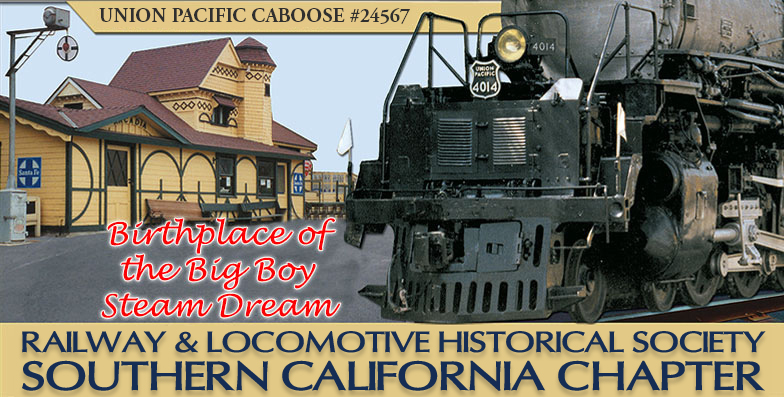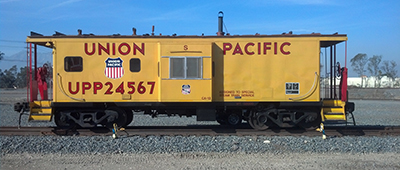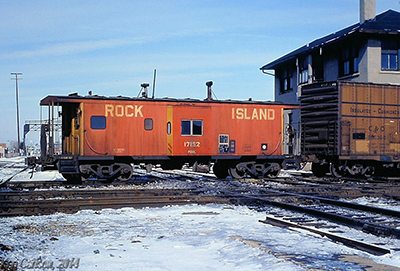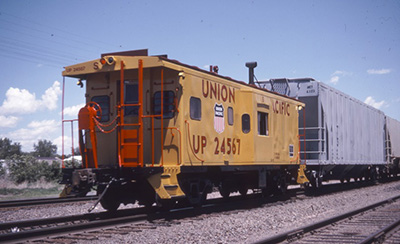Union Pacific Caboose No. 24567
A Brief History Of This Car
Union Pacific Caboose Number 24567 is a model CA-13-2 "Bay Window" extended-vision steel caboose. It was built in November 1967 for Chicago, Rock Island and Pacific Railroad, commonly known as Rock Island Railroad. Its original road number was RI No. 17149.
After Union Pacific acquired Rock Island, this caboose was repainted and renumbered UP No. 24567 in April 1980. After Union Pacific acquired many railroads in the 1980s and 1990s, the supply of road numbers available under the "UP" reporting mark was nearing exhaustion. Union Pacific received new reporting marks ("UPY" for yard locomotives, and "UPP" for its passenger cars and other heritage fleet equipment). This caboose was reassigned to the UPP reporting mark, and has been known since as UPP No. 24567.
After use of cabooses was discontinued on freight trains, this was one of the few cabooses still in service, used on Union Pacific's special event trains, and assigned to its heritage fleet operations in Cheyenne, Wyoming.
Union Pacific donated No. 24567 to The Railway and Locomotive Historical Society, Southern California Chapter in July 2013, when our organization returned UP 4014 Big Boy steam locomotive to Union Pacific's heritage steam locomotive fleet.
Just into the 2014 New Year, the caboose departed Cheyenne, Wyoming on a freight train. From Cheyenne, it was brought to Southern California (via Ogden, Salt Lake City, and Las Vegas) on regular freight trains to U.P.'s West Colton, California facility on January 5, 2014.
Caboose No. 24567 arrived at the Los Angeles County Fairgrounds in Pomona, California on January 26, 2014, along with an insulated boxcar, which was pulled by UP Locomotive No. 3015. All three are new rollingstock items for the RailGiants' collection.
The caboose arrived at RailGiants Train Museum at the Los Angeles County Fairgrounds, Pomona, California, with Union Pacific locomotive No. 3105, during ceremonies on February 22, 2014.
About Cabooses
Cabooses were used at the rear of freight trains to house train crew members not stationed in the train's locomotive. Brakemen and conductors were often situated in the caboose while the train was in motion. Cabooses usually contain storage closets, a conductor's desk, work/meal table, seating, cooking facility, bedding, and toilet.
Cabooses were built to provide the train crew an extended vision of the freight cars. Most common cabooses have a Cupola, a high box with windows on top of the caboose allowing crew to view above most freight cars. Our wooden Santa Fe Railway caboose No. 1314 is an example of a Cupola caboose.
When railroads were concerned about height restrictions, they opted for a Bay Window design, where a caboose's extended vision was provided over both sides of the track.
During the 1980s, railroads reduced freight train crew requirements so that only two people are required, and both will work in the locomotive. The special markings at the end of a caboose that signaled the end of a train, were replaced by a flashing red light attached to a train's last freight car. Cabooses were therefore no longer needed. Most were scraped, donated, and sold. Few are still used in railroad yards today.






